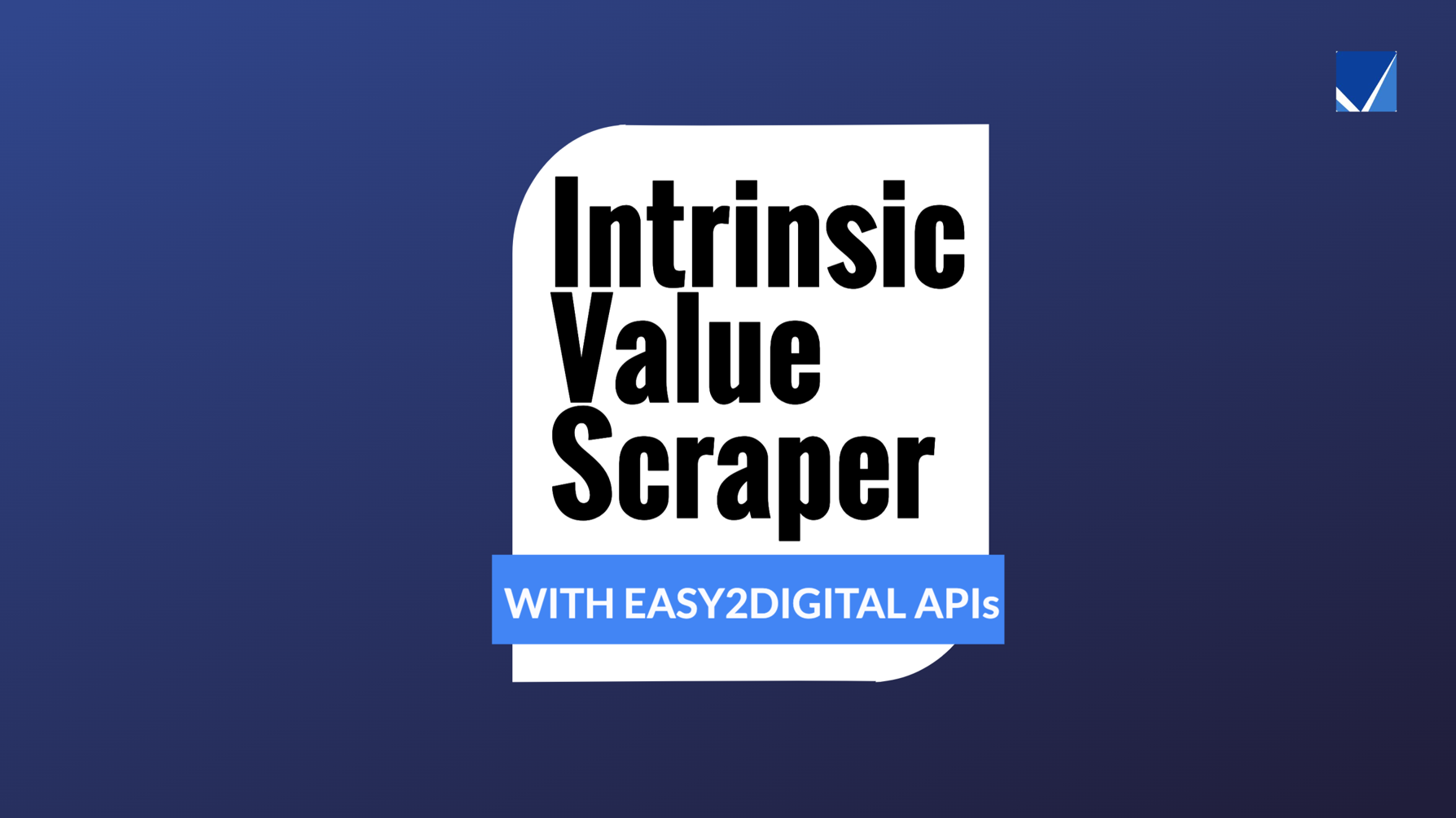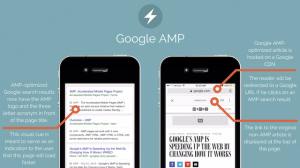Chapter 62 – Intrinsic Value Scraper for Comparing BVPS vs Price per Share Using Easy2Digital API
Discounted value of the cash that can be taken out of a business during its remaining life, is a well-known intrinsic value explanation offered by Warren Buffett. In fact, the intrinsic value calculator has a top-down and simple way out although the bottom-up and in-depth one requires more input.
In this article, I’ll walk you through how to leverage Easy2Digital API data to build an intrinsic value scraper using Python. By the end of this piece, you can quickly scrape and consolidate 5 metrics in bulk, and find out if the symbol candidate from your list is a potential undervalued one to add to the investment queue by BVPS vs price per share.


Discounted value of the cash that can be taken out of a business during its remaining life, is a well-known intrinsic value explanation offered by Warren Buffett. In fact, the intrinsic value calculator has a top-down and simple way out although the bottom-up and in-depth one requires more input.
In this article, I’ll walk you through how to leverage Easy2Digital API data to build an intrinsic value scraper using Python. By the end of this piece, you can quickly scrape and consolidate 5 metrics in bulk, and find out if the symbol candidate from your list is a potentially undervalued one to add to the investment queue by BVPS vs price per share.
Pros and cons to make more time by using Easy2Digital Intrinsic Value Scraper
Pros
- Collect and consolidate any symbol data as you like in one place, which saves time to quickly check stock symbol top-down intrinsic value, and customize the dashboard to implement intrinsic value analysis
- Specifically provide key metrics which are EV, net debt, book value, real-time outstanding shares, and price per share
- Easy2Digital API has a free version
- FAQ
Cons
- Compared to the paid software out there, It requires programming knowledge and script maintenance and upgrades
- Activating automation using the cloud might have additional fees although the amount is small and it charges pay-as-to-go normally.
Table of Contents
- Enterprise Value: EV vs Market Cap
- Net Debt: Capital Levered vs Liquidity
- Share Outstandings and real-time price per share
- Book Value
- BVPS or book value per share vs price per share
- Full Script of Intrinsic value scraper and Easy2Digital API Token
Enterprise Value
EV is the value of a company, which is different from market capitalization. It’s notably popular to use for M&A investors. Compared to market cap, EV also considers net debt performance. So generally EV is greater than the market cap. Unless the company both doesn’t leverage debts to raise funds at all and invest in hardware and software for future growth.
EV = market cap + net debt
Enterprise value is not a static number and it does fluctuate like the market cap. The ratio between EV and market cap can imply two things. First thing first, if the case is much EV value which is greater than market cap, it implies much debt levered the company is using.
Conversely, if the case is EV value which is much closer to market cap or even less than, it implies the company less leverages debt and might be a cash cow.
Here takes the symbol aapl for the example of part of the intrinsic value scraper script:
https://www.buyfromlo.com/api/1/symbol-enterpriseValue?symbol=&token=
Net Debt
Companies basically have two fundraising approaches. One is the debt, the other is to sell the equity. Each approach has pros and cons. In terms of debt, although it has a liability, as long as the interest rate is reasonable and stable, companies prefer a certain proportion of debt to raise funds compared to the equity approach.
Higher or lower net debt can’t tell if a company is easily liquidated or is growing exponentially, because it depends on the macro-economic factors, and bank interest rate conditions.
Net debt = Short term Debt + long term debt (Including interests) – cash / cash equivalent
For example, in 2022, USA Fed central bank keeps increasing the monetary interest rates against the severe domestic inflation issue. This approach can seriously impact the company’s profitability if they have a higher debt proportion in its fundraising portfolio.
https://www.buyfromlo.com/api/1/symbol-balanceSheetStatement?symbol=&token=
Outstanding Shares
Shares outstanding refer to a company’s stock currently held by all its shareholders, including share blocks held by institutional investors and restricted shares owned by the company’s officers and insiders.
A company’s outstanding shares are not static and might fluctuate over time. It’s like a kind of product inventory, in which inventory stack and balance reflect the market demand momentum. Moreover, this number correlates with other critical financial performance metrics and the financial ratio at the same time. Thus, an intrinsic value monitor dashboard should reflect this by automating updating the outstanding shares using an intrinsic value scraper and easy2digital API.
Here takes the symbol aapl for the example of part of the intrinsic value scraper script:
https://www.buyfromlo.com/api/1/symbol-sharesOutstanding?symbol=&token=
def shareOutstandingEasy2Digital():
symbolccc = "aapl"
easy2digitalToken = easy2digitalAPIToken
e2dAPI = requests.get('https://marketing-bots.herokuapp.com/api/1/symbol-sharesOutstanding?symbol=' + symbolccc + 'token=' + easy2digitalToken)
return e2dAPI
e2dsharesoutStanding = shareOutstandingEasy2Digital()
print(e2dsharesoutStanding)
Book Value
Book value is a term that describes the basic net worth of a company. It’s the total of its assets minus its liabilities. The book value of a company is simply its assets minus its liabilities. Thus, basically, this number represents the naked value of a company after the tides go away, such as liability, market overvalued calculation, etc
Book value = total asset – total liability
Here takes the symbol aapl for the example of part of the intrinsic value scraper script:
https://www.buyfromlo.com/api/1/symbol-balanceSheetStatement?symbol=&token=
Book value per share (BVPS) vs price per share
Book value / shares outstanding = book value per share. In a way, it reflects the real aspect of the shareholders’ equity value.
Market Cap/shares outstanding = price per share, which is being affected by supply & demand, company news, new business/products, acquisition and merger, governmental tax policy, central bank interest rate, industry/sector’s news (competitor going away, or substitute demand). Regarding the real-time price per share data feed, please refer to the other tutorial as listed below:
Chapter 60 – Stock Symbol Data Scraper for Financial Ratio Analysis
Basically, when BVPS is less than the market price per share, the company is undervalued. Apart from that, there are two signals implying opportunities as well.
First thing first, the BVPS is slightly greater than the market price per share. The other is the financial ratio common sizing comparison in the same industry. Usually, we use the equation BVPS / market price per share to compare the ratio. It’s because sometimes in some industries, it’s difficult to find symbols BVPS that is less than the actual price.
Full Script of Intrinsic value scraper and Easy2Digital API Token
If you are interested in the Easy2Digital financial statement API, and the full python script of Chapter 62 – Intrinsic Value Scraper for Comparing BVPS vs Price per Share Using Easy2Digital API, please subscribe to our newsletter by adding the message “Chapter 62, Free API Token”. We would send you the script immediately to your mailbox.
I hope you enjoy reading Easy2Digital financial statement API, and Chapter 62 – Intrinsic Value Scraper for Comparing BVPS vs Price per Share Using Easy2Digital API. If you did, please support us by doing one of the things listed below, because it always helps out our channel.
- Support and donate to our channel through PayPal (paypal.me/Easy2digital)
- Subscribe to my channel and turn on the notification bell Easy2Digital Youtube channel.
- Follow and like my page Easy2Digital Facebook page
- Share the article to your social network with the hashtag #easy2digital
- You sign up for our weekly newsletter to receive Easy2Digital latest articles, videos, and discount codes
- Subscribe to our monthly membership through Patreon to enjoy exclusive benefits (www.patreon.com/louisludigital)
FAQ:
Q1: What is the Intrinsic Value Scraper?
A: The Intrinsic Value Scraper is a tool designed to calculate the intrinsic value of a product or service. It helps businesses determine the true worth of their offerings by analyzing various factors such as market trends, competition, and customer demand.
Q2: How does the Intrinsic Value Scraper work?
A: The Intrinsic Value Scraper uses advanced algorithms and data analytics to gather information from multiple sources. It analyzes factors like pricing, customer reviews, market trends, and competitor analysis to calculate the intrinsic value of a product or service.
Q3: Why is calculating intrinsic value important for businesses?
A: Calculating intrinsic value helps businesses understand the true worth of their offerings. It allows them to set appropriate pricing, identify areas of improvement, and make informed business decisions based on data-driven insights.
Q4: Can the Intrinsic Value Scraper be used for any type of product or service?
A: Yes, the Intrinsic Value Scraper is versatile and can be used for various types of products and services. It can be customized to suit the specific needs of different businesses and industries.
Q5: How accurate is the Intrinsic Value Scraper in determining intrinsic value?
A: The accuracy of the Intrinsic Value Scraper depends on the quality and relevance of the data it analyzes. It is constantly updated with the latest information to ensure accurate calculations and insights.
Q6: Is the Intrinsic Value Scraper easy to use?
A: Yes, the Intrinsic Value Scraper is designed to be user-friendly and intuitive. It provides a simple interface where users can input data and receive comprehensive reports on the intrinsic value of their products or services.
Q7: Can the Intrinsic Value Scraper help with pricing strategies?
A: Absolutely! The Intrinsic Value Scraper provides valuable insights into pricing strategies. By understanding the intrinsic value of their offerings, businesses can set competitive prices that maximize profitability and customer satisfaction.
Q8: Does the Intrinsic Value Scraper provide competitor analysis?
A: Yes, the Intrinsic Value Scraper includes competitor analysis as one of its key features. It compares the intrinsic value of a product or service with that of competitors, helping businesses identify their competitive advantage and areas where they can improve.
Q9: Can the Intrinsic Value Scraper be integrated with other eCommerce platforms?
A: Yes, the Intrinsic Value Scraper can be easily integrated with various eCommerce platforms. It seamlessly integrates with existing systems, allowing businesses to leverage its powerful features without disrupting their current workflows.
Q10: Is the Intrinsic Value Scraper customizable?
A: Yes, the Intrinsic Value Scraper can be customized to meet the specific requirements of businesses. It can be tailored to analyze specific data points, incorporate industry-specific metrics, and provide personalized reports.


